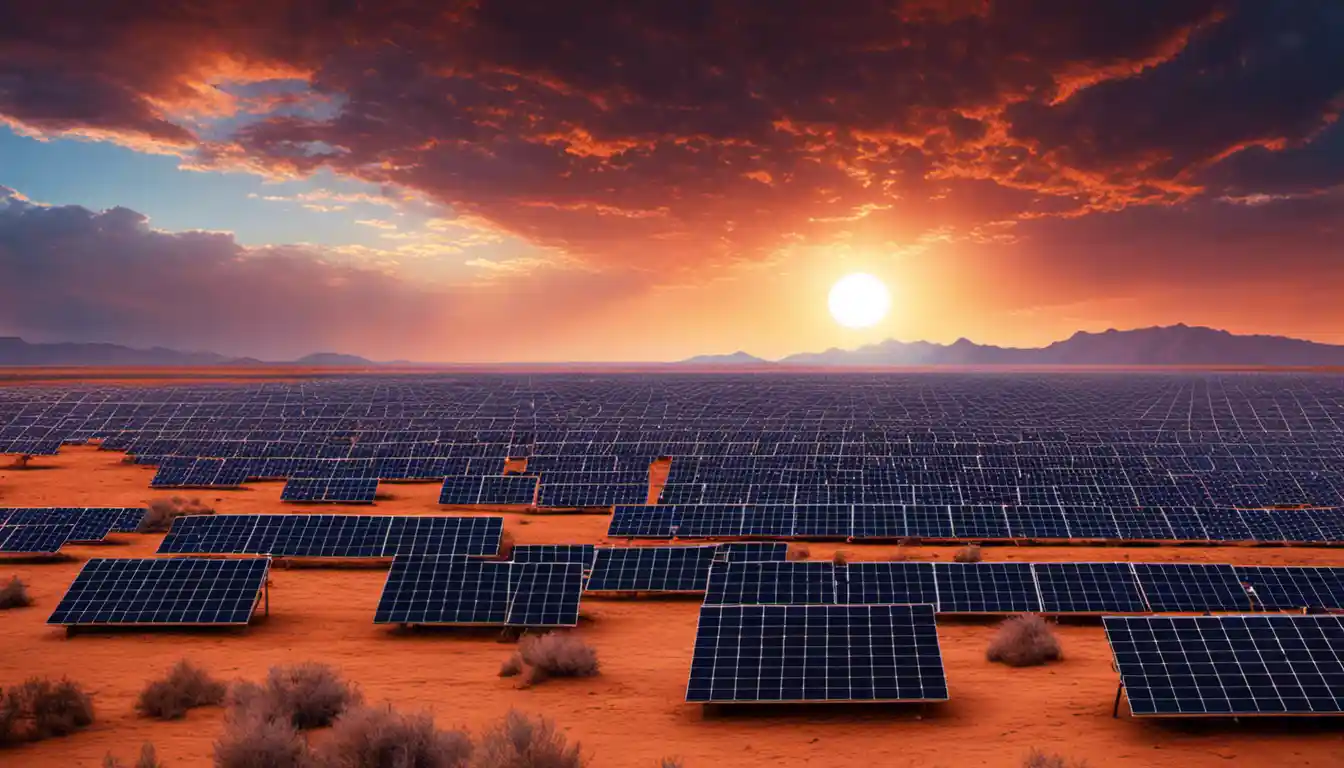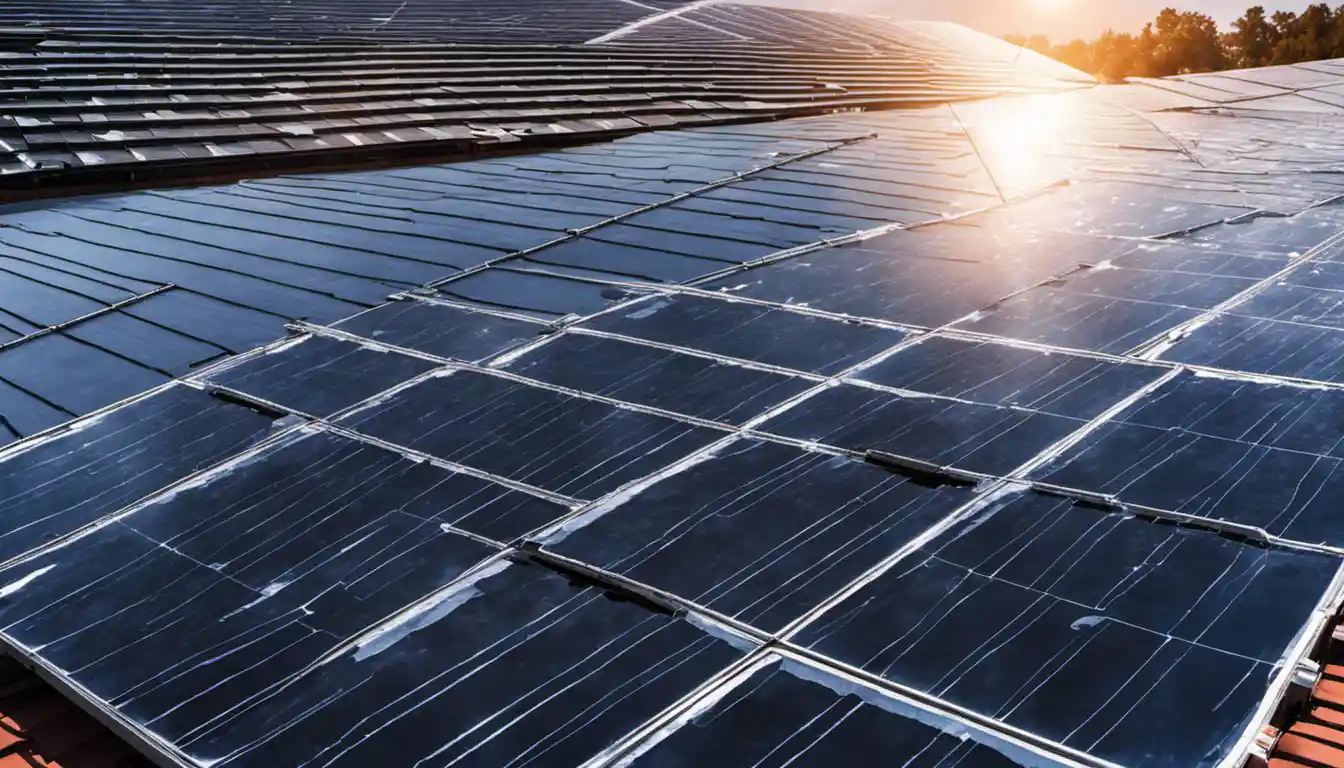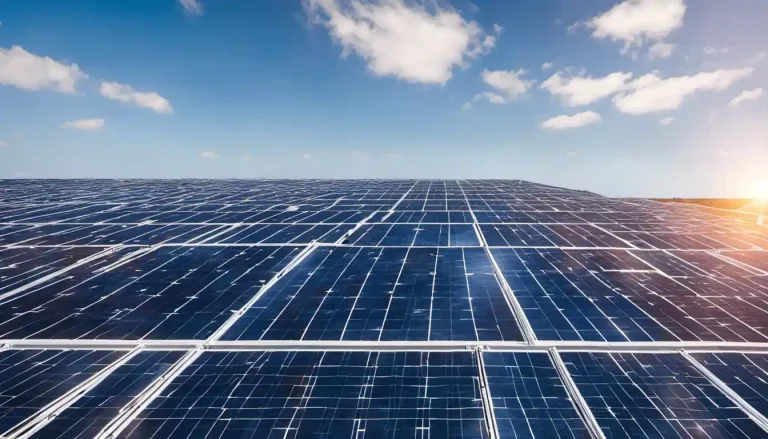Overview and Understanding of Polycrystalline Solar Panels
Polycrystalline solar panels have several advantages, such as being cheaper to manufacture due to the less elaborate silicon purification process, allowing more cost-effective solar panels. They also have a slightly higher heat tolerance than other types. However, the disadvantages of polycrystalline solar panels include the lower efficiency rate due to the less pure silicon used, and their appearance, which some consider less appealing due to the blue, speckled look of the panels.
Definition of Polycrystalline Solar Panels
Polycrystalline solar panels, also known as multicrystalline, are a commonly chosen type of solar panel. Recognizable by their distinctive blue speckled look, these panels are manufactured from raw silicon melted down and poured into a square mold. This process gives them their iconic appearance and provides a more cost-effective alternative to monocrystalline solar panels.
Understanding How Polycrystalline Solar Panels Work
Like other solar panels, polycrystalline solar panels operate by converting sunlight into usable electricity. They leverage the photovoltaic effect, where solar radiation prompts electrons in a solar cell to move, thereby creating electricity. It’s a clean, renewable energy source that comes right from the sun – no middlemen, no emissions. Think of it like photosynthesis for your home or business!
Polycrystalline Solar Panel Advantages
It’s crucial to evaluate the advantages of polycrystalline solar panels thoroughly to better understand their potential benefits for your specific needs.
Lower Cost Factor
One of the substantial advantages of polycrystalline solar panels is their lower cost. The manufacturing process is simpler and less wasteful than their monocrystalline counterparts—no silicon is wasted in their production as multiple silicon crystals are melted together. This efficiency in production results in a more pocket-friendly price tag, bringing solar power well within reach of budget-conscious consumers.
Greater Durability

The structural composition of many microcrystals fuses together to make polycrystalline solar panels, enhancing their robustness. They are known for their ability to withstand diverse weather conditions, ensuring your investment lasts long and delivers value for money.
More Environmentally Friendly
Polycrystalline solar panels are considered more eco-friendly, largely due to their manufacturing process. Unlike monocrystalline panels, where silicon waste is significantly higher, polycrystalline production minimizes waste, thereby reducing negative environmental impacts.
Improved Efficiency
While not as efficient as monocrystalline panels, polycrystalline solar panels continue to demonstrate considerable performance improvements. Modern engineering breakthroughs have increasingly widened their promise, making polycrystalline a worthy contender in the renewable energy market.
Disadvantages of Polycrystalline Solar Panels
Like anything else, along with the polycrystalline solar panel advantages, there are also disadvantages.
Inefficiency As Compared to Other Types
While the efficiency of polycrystalline panels has improved over the years, they still lag behind monocrystalline panels. They have an efficiency rate that usually hovers around 15-17%. On the other hand, monocrystalline solar panels can achieve efficiencies north of 20%.
Fragility

Despite their robust appearance and durability in various weather conditions, polycrystalline panels are susceptible to cracking or breaking if mishandled. Care must be taken during installation and transportation to avoid damage.
Requirement of More Space
Taking into account their lower efficiency, more polycrystalline panels would be required to match the output provided by a smaller number of monocrystalline panels. Therefore, if space is a consideration, more efficient panel types might be a better choice.
Shorter Lifespan
While the lifespan of a solar panel is significantly dependent on its maintenance and exposure to environmental stressors, in general, polycrystalline solar panels may not last as long as monocrystalline ones.
Susceptibility to High Heat
Like all solar panels, polycrystalline is not a fan of extreme heat. They tend to have a slightly lower heat tolerance; their performance can be affected more negatively as temperatures increase, leading to a reduction in electricity production.
Comprehensive Comparison: Polycrystalline vs. Other Solar Panel Types
To fully appreciate the pros and cons of polycrystalline solar panels, it’s helpful to stack them up against other kinds available in the market.
Polycrystalline vs. Monocrystalline Solar Panels

While both types are made of silicon, monocrystalline panels are crafted from a single, pure crystal structure, allowing electricity to flow easier, which leads to a higher efficiency rate. Nevertheless, this comes at a higher price point.
Polycrystalline vs. Thin-Film Solar Panels
Thin-film solar panels offer a more flexible and lightweight solution, excellent for certain applications like small devices or curved surfaces. However, they lag significantly behind in terms of efficiency, and their shorter lifespan makes polycrystalline solar panels a preferable option for most homeowners and businesses.
Conclusion: Is Polycrystalline Solar Panel Right for You?
The “right” solar panel depends heavily on the specific needs and constraints of your project. Not every situation calls for the highest efficiency on the market, and sometimes, a lower upfront cost and the value for money are more suitable.
Factors to Consider before Choosing Polycrystalline Solar Panels
Before choosing to purchase these panels, some key factors to consider include your energy needs, available space, budget, local weather patterns, and eco-conscious considerations.
Making an Informed Decision on Solar Panels
Understanding the advantages and disadvantages of polycrystalline solar panels is a valuable step in making an informed decision when transitioning to green energy.
The switch to solar energy is a decision that benefits not just you, but the planet too. Evaluate your options, and make the best choice for your needs. For further information on polycrystalline solar panels or other solar panel types, please check the related resources provided.



